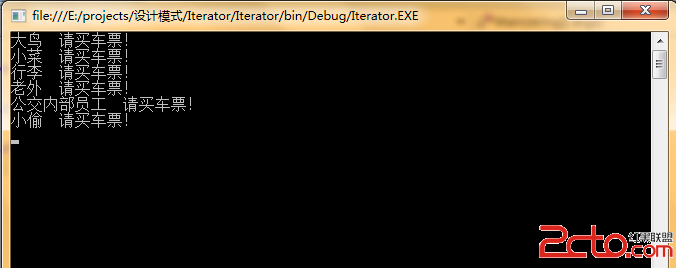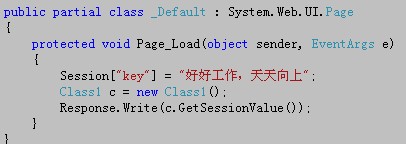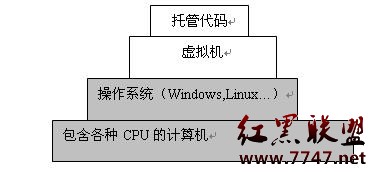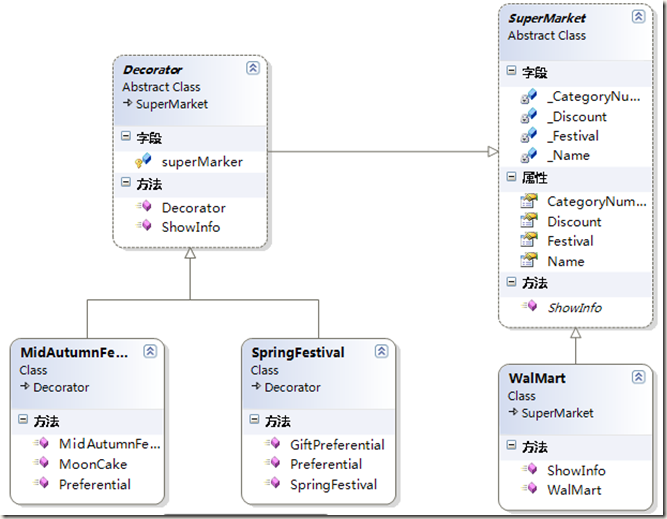用xUnit.net在单元测试中实现构造函数依赖注入
英文关键词:Constructor Dependency Injection and Unit Testing(为了方便英文搜索)
自从博客园开发团队将开发架构迁移至DDD(领域驱动开发),就开始正式使用“构造函数依赖注入”,由CNBlogs.Infrastructure.CrossCutting.IoC(IoC容器抽象层,目前默认容器用的是Unity)负责。
通过构造函数进行依赖注入,避免了在代码中针对所依赖的接口创建相应的实例,这个工作改由IoC容器在运行时自动完成。我们主要在APS.NET MVC的Controller与应用层的服务实现中使用。
比如下面的APS.NET MVC Controller示例代码:
public class AdminController : Controller{ private IBlogSiteManagementService _blogSiteService; public AdminController(IBlogSiteManagementService blogSiteService) { _blogSiteService = blogSiteService; }}ASP.NET MVC会在运行时通过IoC容器获取IBlogSiteManagementService的实现,并传递给AdminController的构造函数。(这个操作是在DefaultControllerFactory.Create方法中完成的,参见ASP.NET MVC源代码DefaultControllerFactory.cs第259行)
注:要让ASP.NET MVC支持依赖注入,需要实现IDependencyResolver接口,并将所有MVC自带的IController的实现注册到你所用的IoC容器。
自从成功用上了依赖注入,差点成为依赖注入“控”,看到需要依赖的地方,就想着注入。
爱情是不是也可以依赖注入?在你心中声明一下你心仪的女孩的样子,然后丘比特就会给你注入。。。
进入正题。。。
改变博客园团队开发方式的不仅是DDD(领域驱动开发),还有TDD(测试驱动开发)。有了轻微的依赖注入“控”,在写测试代码时,我们不由自主地想到了测试类的构造函数依赖注入。
可是尝试了几个主流的.NET测试框架(MsTest, NUnit, MbUnit, xUnit.net),连带参数的构造函数都不支持,更别谈构造函数依赖注入。
搜遍互联网,也没发现有人试图解决这个问题。
刚开始TDD时,我们就被这个问题困扰,似乎是一个暂时无法解决的问题。。。于是,这就成为了一个可望而不可及的梦想。
不能注入,那只能在无参构造函数中手动获取所依赖接口的实现实例,示例代码(用的是xUnit.net)如下:
public class MyPostList{ private IBlogSiteManagementService _blogSiteService; public MyPostList() { _blogSiteService = IoCFactory.Instance.CurrentContainter .Resolve<IBlogSiteManagementService>(); } [Fact] public void Get_My_Recent_Admin_Posts() { Assert.NotNull(_blogSiteService); } }昨天开始,我们决定攻克这个难题,比较了几个测试框架,最终选择了xUnit.net(MsTest由于没有开源,根本没考虑)。
选择的理由是xUnit.net是NUnit的开发者开发的,扩展性很好。
解决的思路很简单:找到测试运行时测试类的实例化是在哪进行的。
有了源代码,让这个寻找过程轻松了很多。
xUnit.net在Visual Studio中也是通过TestDriven.net加载的,所以打开xUnit的源代码,直奔主题,进入xunit.runner.tdnet项目,打开TdNetRunner.cs,然后顺藤摸瓜:
Xunit.TestRunner() > Xunit.ExecutorWrapper.RunClass() > Xunit.Sdk.Executor.RunTests() > TestClassCommandRunner.Execute() > TestCommandFactory.Make() > LifetimeCommand.Execute() 在Xunit.Sdk.LifetimeCommand.Execute(object testClass)中发现了瓜:
public override MethodResult Execute(object testClass){ if (testClass == null) testClass = method.CreateInstance();}method.CreateInstance()实际调用的代码是这样的:
public object CreateInstance(){ return Activator.CreateInstance(method.ReflectedType);}一看代码就知道为什么只支持无参的构造函数。
看到瓜,就容易找到解决方法,既然在 testClass == null 时才会创建测试类的实例,如果我们通过IoC容器在这个方法执行前创建testClass的实例并传递LifetimeCommand.Execute方法,不就可以解决问题了吗?
所以,继续顺藤摸瓜,找出在哪里调用了LifetimeCommand.Execute(object testClass)方法。。。
在Xunit.Sdk.TestClassCommandRunner.Execute()中找到:
MethodResult methodResult = command.Execute(testClassCommand.ObjectUnderTest);testClassCommand的类型是ITestClassCommand接口,该接口的实现是Xunit.Sdk.TestClassCommand,看看它的ObjectUnderTest属性:
public object ObjectUnderTest{ get { return null; }}只要这里从IoC容器返回测试类的实例,就可以实现依赖注入了。
进入解决方案。。。
注:解决方案不需要修改任何xUnit.net的源代码。
在单元测试项目中创建一个实现ITestClassCommand接口的IocTestClassCommand类,代码如下:
public class IocTestClassCommand : ITestClassCommand{TestClassCommand _testClassCommand; public IocTestClassCommand() : this((ITypeInfo)null) { }public IocTestClassCommand(Type typeUnderTest) : this(Reflector.Wrap(typeUnderTest)) {}public IocTestClassCommand(ITypeInfo typeUnderTest){ _testClassCommand = new TestClassCommand(typeUnderTest);}public object ObjectUnderTest{ get { return IoCFactory.Instance.CurrentContainter. Resolve(_testClassCommand.TypeUnderTest.Type); }}public Random Randomizer{ get { return _testClassCommand.Randomizer; } set { _testClassCommand.Randomizer = value; }} public ITypeInfo TypeUnderTest{ get { return _testClassCommand.TypeUnderTest; } set { _testClassCommand.TypeUnderTest = value; }} [SuppressMessage("Microsoft.Design", "CA1062:Validate arguments of public methods", MessageId = "0", Justification = "This parameter is verified elsewhere.")]public int ChooseNextTest(ICollection<IMethodInfo> testsLeftToRun){ return _testClassCommand.Randomizer.Next(testsLeftToRun.Count);}public Exception ClassFinish(){ return _testClassCommand.ClassFinish();}public Exception ClassStart(){ return _testClassCommand.ClassStart();}public IEnumerable<ITestCommand> EnumerateTestCommands(IMethodInfo testMethod){ return _testClassCommand.EnumerateTestCommands(testMethod);}public IEnumerable<IMethodInfo> EnumerateTestMethods(){ return _testClassCommand.EnumerateTestMethods();}public bool IsTestMethod(IMethodInfo testMethod){ return _testClassCommand.IsTestMethod(testMethod);}}红色字体部分就是实现依赖注入的代码,其他都是为了实现ITestClassCommand接口,将方法调用转发给Xunit.Sdk.TestClassCommand。
关键问题解决,但大功还没造成,还有两个问题需要解决:
1. 如何使用自己定义的IocTestClassCommand?
2. 如何向IoC容器注册所依赖接口的实现?
我们需要定义一个Attribute,继承自Xunit.RunWithAttribute,名叫IoCTestClassCommandAttribute,代码如下:
public class IoCTestClassCommandAttribute : RunWithAttribute{ public IoCTestClassCommandAttribute() : base(typeof(IocTestClassCommand)) { IBootStrapper bootStrapper = new DefaultBootStrapper(); bootStrapper.Boot(); }}bootStrapper.Boot是为了解决第二个问题,在其中完成IoC容器的注册。BootStrapper是一个独立的项目,ASP.NET MVC项目也是调用这个接口进行IoC容器的注册,这样实现了单元测试项目与Web项目对IoC注册的重用。
IoCTestClassCommandAttribute在构造函数中将IocTestClassCommand的类型信息传递给父类RunWithAttribute,解决了第一个问题。
进入激动人心的时刻。。。
如何在测试类中使用这个特性?
[IoCTestClassCommand] public class MyPostList{ private IBlogSiteManagementService _blogSiteService; public MyPostList(IBlogSiteManagementService blogSiteService) {&nb
补充:Web开发 , ASP.Net ,




